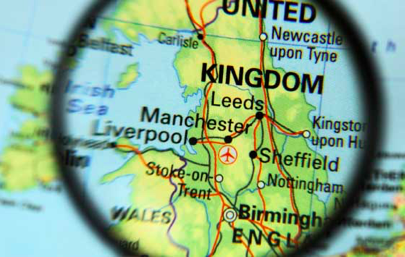The UK’s Northern Powerhouse Initiative needs a Belt and Road Strategy
China’s Belt and Road Initiative (BRI), conceived in 2013, seeks to promote global economic development through improving trade, investment in infrastructure and fostering innovation. Although no time horizon has been explicitly stated, the estimated investment is between $4 and $8 trillion, of which around $1 trillion has already been pledged. The initiative remains in its infancy; but given its recent addition to the CCP constitution, efforts will no doubt be accelerated in the years to come. While most BRI funding has been provided to developing countries, particularly in Asia and Africa, BRI does not rule out investments in developed markets. Going forward, it’s likely that there will be more appetite to invest in developed markets as part of the BRI. Many Chinese multinationals are already setting up BRI investment divisions, not only because they are encouraged by government to participate in BRI, but also because BRI investments are more likely to secure regulatory approval. Recent data showing dramatic rises in BRI investments while overall investments stagnated testify to this. Moreover, as a greater number of private sector participants become involved in the initiative, their focus on commercial objectives will push them to diversify risk beyond developing countries alone. In one of our previous analyses, we argued that many developing countries that are recipients of BRI investments have higher risk profiles and may have difficulties repaying debts.
The UK’s Northern Powerhouse (NPH) initiative – which seeks to regenerate the economically neglected North of England - stands as a key beneficiary from BRI investors seeking to diversify beyond developing markets. Notably, in May 2017, at the inaugural Belt & Road Summit held in Beijing, the Northern Powerhouse was the only developed market initiative mentioned by President Xi Jinping in his opening address.
We have enhanced coordination with the policy initiatives of relevant countries, such as the Eurasian Economic Union of Russia, the Master Plan on ASEAN Connectivity, the Bright Road initiative of Kazakhstan, the Middle Corridor initiative of Turkey, the Development Road initiative of Mongolia, the Two Corridors, One Economic Circle initiative of Viet Nam, the Northern Powerhouse initiative of the UK and the Amber Road initiative of Poland.
As China watchers will know; what Xi says, Chinese businesses do. This places the NPH in a unique position where it can market itself as the first and premier location for BRI investors outside of the developing world. The NPH and BRI share many common goals; improved infrastructure, prioritising clean energy and an emphasis on advanced technologies.
Existing areas of collaboration between the NPH and China also serve as a strong foundation for future progress under the banner of BRI. Investments from China into the NPH area have been large; for example, a £1 billion deal between Sheffield City Council and Sichuan Guodong Construction Group was signed in July 2016. Beijing Construction Engineering Group (BCEG) is constructing part of Middlewood Locks in Salford; there is ongoing Chinese participation in £800m Airport City development at Manchester Airport and Chinese investors have taken a 13% stake in Manchester City. Many NPH cities are already twinned with Chinese cities (e.g. Manchester/Wuhan and Liverpool/Shanghai), large numbers of Chinese students study in Northern universities and the first direct flight from Beijing to Manchester which commenced last year has been a great success.
David Cameron and George Osborne spearheaded the creation of the “golden era” between China and the UK and the two countries have taken steps to boost collaboration, the current UK government even published a NPH investment portfolio for Chinese investors. Yet, most of these wereone-off and small-scale projects, and don’t fully appreciate the size of the BRI opportunity.
Concurrently, the NPH needs much better transport connectivity between its major cities in order to fully benefit from agglomeration affects. Civic leaders and The Northern Powerhouse Partnership are doing a good job at promoting these causes, but are coming up against the difficulty of limited pools of central government funding.
More innovative means of infrastructure financing are long overdue, and the BRI can help provide a part of the solution. Chinese policy banks can provide financing at attractive rates, and Chinese contractors are now world leading in high speed rail.
Steps are being made in the right direction. A Northern Powerhouse delegation recently visited Shanghai to promote advanced manufacturing. The Department for International Trade and the Manchester-China Forum are beginning to acknowledge the size of the opportunity, yet on the whole activities remain localised and fragmented. Investors we have spoken to complain that there is no one point of contact for the Northern Powerhouse.
The strategy should identify NPH companies, sectors and cities that could succeed under BRI. Within this, infrastructure development (particularly rail and energy), industry investments (creative and tech) and real estate look promising. Moreover, a focused approach that targets specific Chinese companies, sectors and provinces is likely to be far more effective than one which targets “China” more broadly. Further research into the funding landscape needs to be undertaken, and joint research projects with Chinese organisations can serve as a backbone for collaboration.
As such, if the Northern Powerhouse can design and implement a robust BRI strategy, it stands to fully reap the benefits from its unique position. The Northern Powerhouse already has a strong collaborative relationship with China, its institutions and its people; and the next logical step should be to develop a specific China and BRI strategy.
PHOTOCREDITS: aboutmanchester.co.uk

